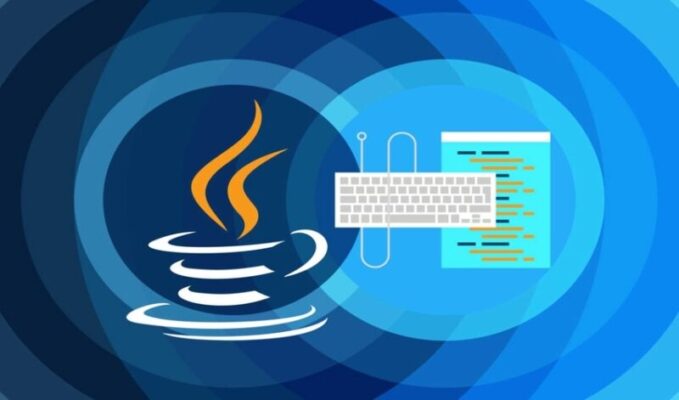Java is an old-timer in the software development market. 10 years ago it was a highly popular programming language and every second app would run on Java. But what about the present time? Nothing has changed much. Despite the fact that a lot of new programming languages have appeared since its creation Java still keeps the leading positions in a software development world, being ranked among the top 5 most popular programming languages on reputable technology sites.
Java is a robust programming language that is used to develop advanced software for a wide variety of devices and embedded systems. It is multi-platform compatible and has an extensive and rich Application Programming Interface (API). Besides that, it has Integrated Development Environments (IDEs) – software platforms that provide developers with a comprehensive set of automation tools, editors, and debuggers. In this article, you’ll learn about the latest Java development trends in 2022.
#1 Java Releases
According to the JRebel developer survey, 58% of respondents use Java 8, even though there is Java 15 on the way, expecting its release in September 2020. This deep devotion to Java 8 can be explained by available public updates for commercial and personal use and the long-term support (LTS) version that Java developers have been using all this time. Unfortunately, Oracle has recently stopped updating Java 8 for commercial use and public updates will face the same fate in December 2020. Therefore, Oracle company encourages its followers to move to the latest Java releases and not to get stuck at one version.
Java is one of the most frequently updated programming languages. The Oracle company releases new Java versions every 6 months to improve the programming language with the newest features and push its users to constantly fill in the gap in their Java knowledge. The latest Java version Java 14 (Java SE 14) and its Java Development Kit (JDK 14) were both released in March 2020.
Java 14 has 16 main enhancements such as Records to make the class declaration more compact, NullPointer Exceptions – exception messages generated by JVM, Text Blocks to insert HTML, XML, SQL, or JSON snippet into a code, Pattern Matching for instanceof and a lot more. In JDK 14, you’ll find the Z Garbage Collector (ZGC) for Windows and macOS, Parallel GC to schedule parallel tasks, new APIs for JDK Flight Recorder (JFR), an upgraded version of Apache Santuario library, and a lot more.
#2 Spring Framework Releases
If you’re familiar with Java then you’re highly likely to use the Spring framework and its diverse ecosystem. Recently, there’s been a release of Spring 5.0 with major upgrades that include:
- core framework revision;
- faster startup time for applications;
- support for Kotlin programming language based on Java;
- the reactive programming model for better API implementations and the management of asynchronous data streams;
- improved testing with JUnit 5 Jupiter for writing and running Jupiter-based tests in Spring;
- upgraded library versions such as Jackson 2.6, Hibernate 5.0, JDCB 4.0, and others.
Besides the Spring framework, the reactive programming features are also expected in the Spring Data, Spring Security, Spring Integration, and other Spring-related frameworks. These features allow building sustainable systems that can handle large traffic streams and heavy system loads.
Spring framework isn’t the only framework compatible with Java and you can find lots of other frameworks and tools with the latest updates that provide solutions for specific tasks. For example, JavaScript frameworks like Angular and React are used for the development of single-page apps, Apache Spark is great for data analysis, Hibernate is used for Java web application development, and much more.
#3 Moving from Microservices to Serverless Architecture
Using microservices isn’t a new trend in Java. Microservices are the extension of RESTful web services that allow breaking up your code into smaller pieces, making them more autonomous, easier to develop, deploy, replace, and manage.
The microservice architecture is ideal for the public cloud, with its focus on elastic scaling with on-demand resources. For simplifying microservice app development Java developers usually use Spring Boot and Spring Cloud.
When it comes to Java trends, a new wave is to move from microservices to a serverless architecture. It means that you don’t need any server to build and deploy your code. By using Backend as a Service (BaaS) solution in a cloud, you don’t need to perform any infrastructure management tasks or provide system maintenance operations, focusing mainly on building your app.
Serverless architecture allows breaking your code into even smaller chunks than in microservice architecture, making it possible to practically scale your apps infinitely. Also, developers can improve their performance by visualizing the development processes, reducing possible issues and bottlenecks.
To combine serverless and microservice architectures, Java developers turn to Amazon Web Services (AWS) solution, in particular, to Lambda AWS, however, there is a variety of other cloud solutions you can use such as Google Cloud Platform (GCP) or Microsoft Azure.
#4 Big Data Tools for Java
With the rising computing power and exponential information growth, more and more companies turn to big data calculations. Java provides a wide range of open-source tools such as Apache Hadoop, Apache Mahout, JFreechart, and Deeplearning4j to perform big data processing efficiently.
As machine learning and big data are the topical issues in IT, there appear more and more technologies that provide more effective methods of data processing. For example, Apache Spark is an open-source framework that has recently replaced Apache Hadoop as it delivers a better performance of Batch processing, having everything calculated in memory rather than saving the data in storage and as a result reducing operational costs.
#5 Unit Testing
Testing is an essential part of writing code. It proves that your code is viable and minimizes possible errors or misprints, saving you from double work – searching for mistakes and rewriting. However, creating tests manually is a way time-consuming activity, especially when you’re building a complex app in Java. Thus, it’s essential to improve your testing skills in writing automated unit tests. For this, Java developers can use various testing libraries, frameworks, and tools such as JUnit, Mockito, Robot Framework, Selenium, REST-Assured, Cucumber, and many others.
#6 Mastering Git
Another popular Java trend is to record code modifications and track changes in software development projects in Git and GitHub. The tendency of migrating projects from SVN and CVS to Git and GitHub is gaining momentum among software developers right now. And it’s not surprising as Git and GitHub offer diverse and important functions for tracking changes in source code and app version control.
Git has a range of advantages over a common CVS. It’s open-source, free, fast, and has a backup function and simple branch management. It’s usually used in the mix with GitHub which is an online-hosting repository that provides all the Git functionality plus it enables software developers to save their code online and share it with other developers in different projects.
Conclusion
Java programming language dates back to the ’90s and since that time it remains popular among software developers for its robust features, easy-to-learn English-like syntax, and the support of cross-platform application development.
Advances in modern IT technologies push Java specialists to constantly upgrade Java’s features to keep it competitive among other programming languages. These features are introduced with a focus on global development trends. Therefore, developers who use Java can provide a wide range of Java Software Development Services, starting from developing complex desktop apps ending to cross-platform web and mobile applications.
It’s clear that Java is the programming language that’s going to stay with us for a long time and if you need to develop a robust and effective solution for your business then Java language is a viable option to choose.
Read Dive is a leading technology blog focusing on different domains like Blockchain, AI, Chatbot, Fintech, Health Tech, Software Development and Testing. For guest blogging, please feel free to contact at readdive@gmail.com.





